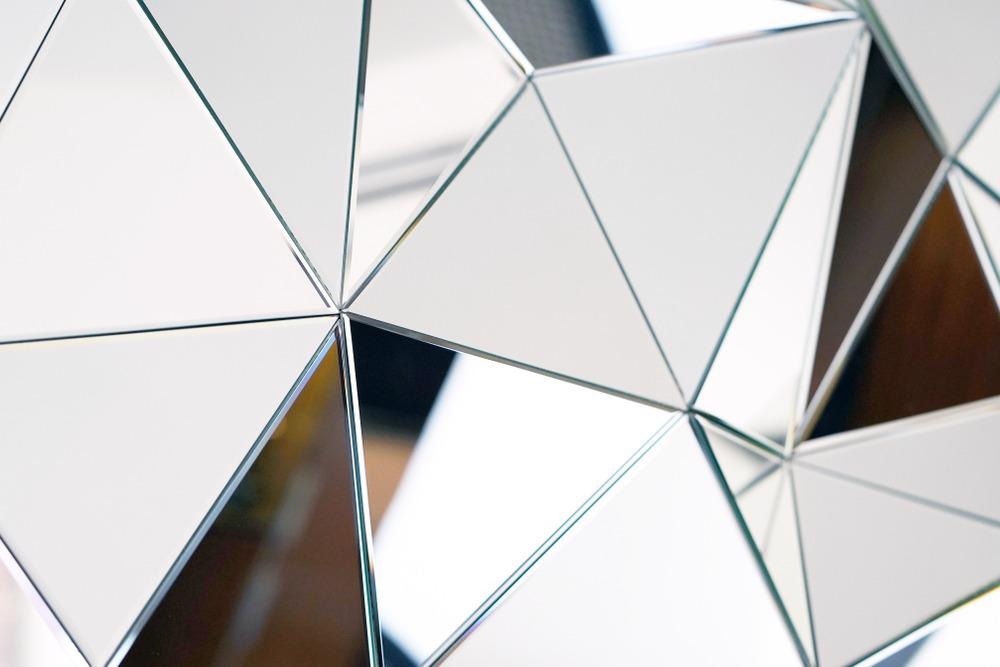X-ray mirrors which can be made of polished glass ceramics, are given a coat of metal to produce an X-ray reflection. Smooth metallic surfaces like this can reflect X-rays at shallow angles, which may be efficient for high-density metals such as gold, platinum, and iridium.

Image Credit: lunopark/Shutterstock.com
X-ray mirrors can be used for applications such as free-electron lasers and astronomical telescopes; by combining nanotechnology, the potential of next-generation X-ray mirror metrology instruments may be promising for the advancement of X-ray nanoprobes.
X-rays hold a significant part in understanding the structure of matter. This has only increased the desire to exploit and utilize these critical beams to an advanced level to further comprehend space.
Modern synchrotron radiation facilities and X-ray free-electron lasers are able to produce highly effective X-rays for industrial research, while astronomical X-ray telescopes can measure X-ray sources on a grander universal scale, looking for faint levels of this radiation beam as well as heat distribution in space.
Current Challenges
However, the success of X-rays relies on the quality of optics commercially available on the market. X-ray mirrors are a significant component of X-ray optics, and while these are in use today, their manufacturing and metrological processes can be found to be limiting.
In accordance to Snell's Law or the Bragg Equation, X-ray mirrors require operation at grazing incidence by total external reflection from single or multilayer coating. The challenge of improving the optical quality of X-rays has depended on increasing the level of accuracy and precision of metrology and manufacturing techniques.
An example of significant surfacing finishing techniques developed includes elastic emission machining and ion beam figuring, which have improved the height and slope errors when creating these advanced mirrors.
However, while these have progressed the development of X-ray mirrors, the global demand for high-quality mirrors with a radius of curvature to a few hundred millimeters has increased to develop the next-generation X-ray telescopes. Another obstacle for this progression consists of current metrology techniques, which are not prepared to meet this objective as well as the transfer of metrology data to the manufacturing process.
Current Metrology Techniques
The current metrology techniques commonly used for the manufacturing of X-ray mirrors is based on stitching as well as deflectometry, or "pencil beam". These techniques can vary in many important components such as precision, measurement speed, and angle range.
An example of a stitching-based technique includes relative angle determinable stitching interferometry (RADSI). Such stitching methods mostly rely on the measurement of multiple small overlapping spaces to compensate for the limited range of a single 2D figure measurement.
A disadvantage of this method is that it is a complex process that can be subjective to systematic errors. However, pencil-beam devices are widely used, have simplistic interpretation advantages, with the ability to measure X-ray mirrors up to 1.5 meters long, although a limitation of this method includes only being able to complete this measurement along one dimension at a time.
Cheaper, Lighter, Better - Making the Next Generation X-ray Mirrors.
Video Credit: NASA Video/YouTube.com
The Novel Metrology Technique
A group of researchers published their novel metrology technique, the speckle angular measurements (SAM) optical scanning head, in the journal Nature, which can be used to advance and overcome the limitations of conventional techniques.
Speckle refers to 2D random intensity patterns which are produced by a laser beam that has been shone through a diffuser and can be treated as multiple pencil beams with different features.
This novel technique that utilizes an instrument based on SAM has various benefits, such as being compact, cost-efficient, and simplistic in use due to being easily integrated with existing pencil beam-based metrology instruments. Additionally, this innovative development can measure a significant number of speckles, which can aid in producing more effective statistics and less random noise.
By having a spatial resolution of less than 0.5 mm, this technique's flexibility can enable SAM-based instruments to perform metrology on mirror surfaces within the most effective spatial frequency range, critical for X-ray beam performance. These features can assist in advancing precision metrology to a higher level and the next generation of X-ray mirrors.
The researchers of this innovative technique have objectives to further develop this metrology method by increasing its stability, robustness, and processing. By applying the advanced fly scan technique, the measurement speed can be raised and more effective. The opportunity to produce new X-ray optics allows speckle angular measurement to enhance current metrology instruments to advance X-ray mirrors to a higher and more efficient level.
This innovation can be seen as the beginning of novel advancements to increase the efficiency and efficacy of current X-ray mirrors. With NASA having produced new lightweight X-ray mirrors in recent years, the progression of this field can revolutionize current methods of space exploration.
The use of nanotechnology can aid in developing higher-performing telescopes to nanoprobes, all aiming for further understanding of space with the next generation of X-ray mirrors.
Further Reading and References
NASA. (2021) NASA's New Lightweight X-ray Mirrors Ready for Try-outs in Space. [online] Available at: https://www.nasa.gov/feature/goddard/2019/nasa-s-new-lightweight-x-ray-mirrors-ready-for-try-outs-in-space
Universe.gsfc.nasa.gov. (2021) X-Ray Optics. [online] Available at: https://universe.gsfc.nasa.gov/xrays/MirrorLab/xoptics.html
Wang, H., Moriconi, S. & Sawhney, K. (2021) Nano-precision metrology of X-ray mirrors with laser speckle angular measurement. Light Sci Appl 10, 195. Available at: https://www.nature.com/articles/s41377-021-00632-4
Disclaimer: The views expressed here are those of the author expressed in their private capacity and do not necessarily represent the views of AZoM.com Limited T/A AZoNetwork the owner and operator of this website. This disclaimer forms part of the Terms and conditions of use of this website.